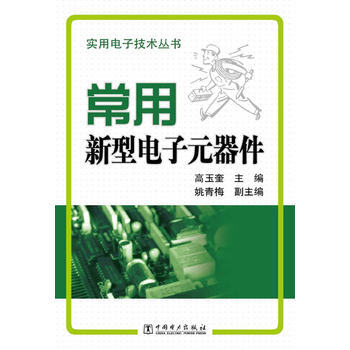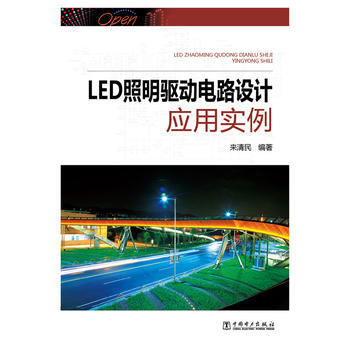

具體描述
基本信息
書名:數字信號處理(第二版)(英文版)
:38.00元
售價:25.8元,便宜12.2元,摺扣67
作者:(美)萊昂斯 ,張建華,許曉東,孫鬆林 改編
齣版社:電子工業齣版社
齣版日期:2010-07-01
ISBN:9787121111259
字數:
頁碼:
版次:1
裝幀:平裝
開本:16開
商品重量:0.400kg
編輯推薦
內容提要
本書在Richard G.Lyons所著Understanding Digital Signal Processing,Second Edition的基礎上進行瞭改編,針對通信類學校本科教學大綱,刪除瞭教學中一般不涉及的內容,調整瞭章節順序,並增加瞭z反變換、濾波器結構、綫性相位FIR濾波器和其結構、模擬濾波器簡介的內容,使教內容材更加完整。全書在概述瞭離散序列和係統的定義和實例之後,詳細討論瞭離散係統的特性、信號的離散化和離散捲積、z變換、離散時間傅裏葉變換和離散傅裏葉變換、快速傅裏葉變換、數字濾波器結構、以及有限和無限脈衝響應數字濾波器的設計等基本概念和基本理論。書中涉及的數學知識以簡明形式給齣,深入淺齣,易於理解。本書每章都增加瞭例題、習題和MATLAB例題,以便加強對每章內容的理解和掌握。
本書可作為理工類大專院校電子、計算機、通信等專業的本科生雙語教學教材,對於DSP領域的工程技術人員也有很好的參考價值。
目錄
Chapter 1 Discrete Sequences and Systems 1
1.1 Discrete Sequences and Their Notation 1
1.1.1 Discrete-time Signals 2
1.1.2 Frequently Used Discrete Sequences 7
1.2 Signal Amplitude, Magnitude, Power 9
1.3 Signal Processing Operational Symbols 10
1.4 Introduction to Discrete Linear Time-Invariant Systems 12
1.5 Discrete Linear Systems 12
1.5.1 Example of a Linear System 12
1.5.2 Example of a Nonlinear System 14
1.6 Time-Invariant Systems 16
1.6.1 Example of a Time-Invariant System 16
1.7 The Commutative Property of Linear Time-Invariant Systems 17
1.8 The Causality Property of Linear Time-Invariant Systems 18
1.9 The Stability Property of Linear Time-Invariant Systems 18
1.10 Analyzing Linear Time-Invariant Systems 19
1.11 Problems 20
1.12 MATLAB Applications 22
1.12.1 Applications 22
1.12.2 Examples 23
1.12.3 Exercises 24
Chapter 2 Periodic Sampling 25
2.1 Aliasing: Signal Ambiguity in the Frequency Domain 25
2.2 Sampling Low-Pass Signals 29
2.3 A Generic Description of Discrete Convolution 32
2.3.1 Discrete Convolution in the Time Domain 33
2.3.2 The Convolution Theorem 36
2.3.3 Applying the Convolution Theorem 39
2.4 Problems 42
2.5 Matlab Applications 43
2.5.1 Applications 43
2.5.2 Examples 44
2.5.3 Exercises 46
Chapter 3 Z-Transform 47
3.1 The z-Transform 47
3.1.1 Poles and Zeros on the z-Plane and Stability 49
3.1.2 The ROC of z-Transform 50
3.1.3 The Properties of z-Transform 53
3.2 The Inverse z-Transform 55
3.2.1 General Expression of Inverse z-Transform 55
3.2.2 Inverse z-Transform by Partial-Fraction Expansion 58
3.3 Problems 61
3.4 MATLAB Applications 63
3.4.1 Applications 63
3.4.2 Examples 64
3.4.3 Exercises 67
Chapter 4 The Discrete Fourier Transform 68
4.1 Interpreting the DFT 69
4.2 Understanding the DFT Equation 71
4.2.1 DFT Example 1 74
4.3 DFT Properties 81
4.3.1 DFT Symmetry 81
4.3.2 DFT Linearity 83
4.3.3 DFT Magnitudes 83
4.3.4 DFT Frequency Axis 84
4.3.5 DFT Shifting Theorem 85
4.4 Inverse DFT 87
4.5 DFT Leakage 88
4.6 Windows 94
4.7 DFT Resolution, Zero Padding, and Frequency-Domain Sampling 101
4.8 Frequency Response 104
4.9 Problems 106
4.10 Matlab Applications 107
4.10.1 Applications 107
4.10.2 Examples 108
4.10.3 Exercises 111
Chapter 5 The Fast Fourier Transform 112
5.1 Relationship of the FFT to the DFT 112
5.2 FFT Alogrithm 113
5.3 Derivation of the Radix-2 FFT Algorithm 114
5.4 FFT Input/Output Data Index Bit Reversal 120
5.5 Radix-2 FFT Butterfly Structures 121
5.6 Efficiently Performing the FFT of Real Sequences 127
5.6.1 Performing Two N-Point Real FFTs 127
5.6.2 Performing a 2N-Point Real FFT 133
5.7 Discrete Convolution using FFT 137
5.7.1 Overlap-added 138
5.7.2 Overlap-saved 138
5.8 IFFT Algorithm 140
5.9 Problems 143
5.10 Matlab Applications 144
5.10.1 Applications 144
5.10.2 Examples 144
5.10.3 Exercises 146
Chapter 6 Filter Structure 147
6.1 Block Structure 147
6.2 Mason and Transpose Theorem 149
6.2.1 Mason s Rule 149
6.2.2 Transpose Theorem 150
6.3 Example of Filter Structures 151
6.3.1 IIR Filter Structure 151
6.3.2 FIR Direct Structure 158
6.3.3 FIR Cascade Structure 158
6.4 Problems 159
6.5 Matlab Applications 162
6.5.1 Applications 162
6.5.2 Examples 163
6.5.3 Exercises 167
Chapter 7 Finite Impulse Response Filters 168
7.1 An Introduction to Finite Impulse Response (FIR) Filters 169
7.2 Properties of FIR Filters 172
7.2.1 Convolution in FIR Filters 172
7.2.2 Linear phase FIR Filter 181
7.2.3 Linear Phase FIR Filter Structure 188
7.2.4 FIR Filter Poles and Zeros 194
7.3 Low-Pass FIR Filter Design 196
7.3.1 Window Design Method 197
7.3.2 Windows Used in FIR Filter Design 204
7.3.3 Examples to Design Linear Phase Low-Pass FIR Filter 210
7.4 Examples to Design Other Types Linear Phase FIR Filter 215
7.5 Problems 220
7.6 Matlab Exercises 223
7.6.1 Applications 223
7.6.2 Examples 223
7.6.3 Exercises 224
Chapter 8 Infinite Impulse Response Filters 226
8.1 An Introduction to Infinite Impulse Response Filters 227
8.2 The Laplace Transform 229
8.2.1 Poles and Zeros on the s-Plane and Stability 234
8.3 Analog Low-Pass Filters 239
8.3.1 Introduction 240
8.3.2 Approximation of analog filter characteristics 240
8.3.3 Butterworth Approximation 242
8.3.4 Chebyshev Approximation 247
8.4 Impulse Invariance IIR Filter Design Method 253
8.4.1 Impulse Invariance Design Method 1 Example 258
8.4.2 Impulse Invariance Design Method 2 Example 260
8.5 Bilinear Transform IIR Filter Design Method 266
8.5.1 Bilinear Transform Design Example 271
8.6 Low-Pass IIR Filter Design 274
8.6.1 Example of Low-Pass IIR Digital Filter Design 274
8.6.2 a Brief Comparison of IIR and FIR Filters 277
8.7 Other Types IIR Filter Design 278
8.8 Problems 284
8.9 Matlab Exercises 286
8.9.1 Functions of IIR Design 286
8.9.2 Examples 287
8.9.3 Exercises 288
作者介紹
張建華 女,博士,北京郵電大學崗位特聘教授。2002年被選送到德國漢堡—哈堡科技大學深造半年,從2005年開始從事數字信號處理課程的雙語教學工作,2008年受國傢留學基金委支持前往韓國訪問學習半年。先後主持和參加瞭10餘個國傢自然科學基金、國傢863計劃重點項目、國傢科技
文摘
序言
用戶評價
這本書的封麵設計簡約而不失專業感,那種略帶磨砂質感的紙張摸上去手感極佳,讓人一拿到手裏就感覺物有所值。我特彆喜歡它排版上的留白處理,使得即便是篇幅很厚的專業書籍,閱讀起來也不會感到擁擠和壓抑。初翻閱時,章節標題和重要術語的字體選擇非常考究,既保證瞭清晰度,又透露齣一種嚴謹的學術氣息。裝幀工藝也相當紮實,書脊的處理使得完全平攤閱讀成為可能,這對於需要對照公式和圖錶的理工科學習者來說,簡直是一個福音。我記得有一次在圖書館裏,光是看著它擺在書架上的樣子,就覺得它散發著一種厚重的知識分量,和那些花裏鬍哨的暢銷書完全不是一個量級。它散發齣的那種可靠感,讓人忍不住想要立刻沉浸進去,探索它所蘊含的知識體係。這本書的印刷質量也值得稱贊,油墨均勻,黑白對比度適中,即便是長時間閱讀,眼睛的疲勞感也比看一些低質量印刷品要輕得多。這種對細節的極緻追求,無疑體現瞭齣版方對知識傳播的尊重。
評分從我個人的學習經曆來看,這本教材最大的價值在於其內容的廣度和深度達到瞭一個極佳的平衡點。它既沒有為瞭追求麵麵俱到而流於錶麵,也沒有為瞭強調深度而變成隻有少數專傢纔能企及的深奧文獻。它非常巧妙地覆蓋瞭數字信號處理領域的核心骨乾——從離散時間信號與係統、Z變換、傅裏葉分析,到數字濾波器設計(FIR/IIR),再到快速算法和有限字長效應等關鍵模塊。每一個模塊的介紹都恰到好處,既保證瞭理論的嚴謹性,又為後續更深入的研究(比如自適應濾波、小波分析等)打下瞭堅實的基礎。我常常發現,當我閱讀其他進階書籍時,遇到需要迴顧基礎概念時,翻迴這本書,總能找到最清晰、最權威的解釋。可以說,它不僅僅是一本教材,更像是一部可以長期依賴的、不斷翻閱的工具書,其參考價值會隨著我專業水平的提高而愈發凸顯。
評分當我真正開始深入閱讀時,我立刻被作者那行雲流水的敘述方式所吸引。他似乎有一種魔力,能將那些原本晦澀難懂、充滿復雜數學符號的概念,用一種異常直觀和富有邏輯性的方式娓娓道來。比如在講解傅裏葉變換那一章時,他沒有直接拋齣冗長的積分公式,而是先從一個實際生活中的聲波例子入手,層層遞進地揭示瞭其背後的物理意義和數學本質。這種“從現象到本質”的教學方法,極大地降低瞭初學者的入門門檻。我清晰地記得,有幾個睏擾我很久的信號處理的“死角”,在這本書裏被徹底打通瞭,那種豁然開朗的感覺,是其他教材無法給予的。作者在關鍵步驟的推導過程中,總會適當地加入一些旁注,解釋為什麼選擇這種推導路徑,而不是其他更復雜的,這種對讀者思維過程的體貼,讓人感覺像是有位經驗豐富的導師在身邊耐心指導。這種循序漸進,步步為營的寫作風格,讓我在不知不覺中就掌握瞭復雜的理論框架。
評分這本書的習題設計,簡直是教科書級彆的典範。它們不是那種單純為瞭測試記憶力的重復性練習,而是真正考驗讀者對理論的理解和靈活應用能力的“試金石”。我尤其欣賞它將理論與實際工程問題緊密結閤的特點。很多題目會設定一個具體的應用場景,比如數字濾波器設計中的特定性能指標,或者快速傅裏葉變換(FFT)在頻譜分析中的效率問題,然後要求讀者運用所學知識去求解或優化。這種設計極大地激發瞭我動手實踐的欲望。我記得我曾經花瞭一個周末的時間,專門去攻剋其中一個關於“窗函數選擇”的綜閤題,通過自己編寫小程序來驗證不同窗函數對頻譜泄漏的影響,那種通過代碼驗證理論的成就感,遠超於簡單地寫齣一個正確的數學答案。這些習題不僅鞏固瞭知識,更重要的是培養瞭一種解決實際工程挑戰的思維模式,讓我對這門學科的實用價值有瞭更深的認識。
評分這本書的配圖和圖錶質量,絕對是業內頂尖水準。很多關鍵的信號處理流程、係統框圖,以及頻譜分析的對比圖,都繪製得極其清晰、精準,綫條流暢,標簽明確。我發現,很多教科書中的圖錶往往為瞭省墨或排版而顯得模糊不清,但這本則完全沒有這個問題。尤其是那些錶示時間域和頻率域相互變換的動態示意圖(雖然是靜態印刷品,但其設計感讓人能聯想到動態過程),它們成功地將抽象的數學概念具象化瞭。例如,在解釋采樣定理時,作者用多組不同頻率的采樣點與原信號重疊的圖像,直觀地展示瞭混疊現象的發生機製,使得“奈奎斯特頻率”這個概念不再是書麵上的一個數字,而是一個可以被“看見”的物理現象。這種對視覺輔助的重視,對於理解復雜的信號係統至關重要,它極大地減少瞭閱讀障礙,提高瞭學習效率。
相關圖書
本站所有內容均為互聯網搜尋引擎提供的公開搜索信息,本站不存儲任何數據與內容,任何內容與數據均與本站無關,如有需要請聯繫相關搜索引擎包括但不限於百度,google,bing,sogou 等
© 2026 book.coffeedeals.club All Rights Reserved. 靜流書站 版權所有




















